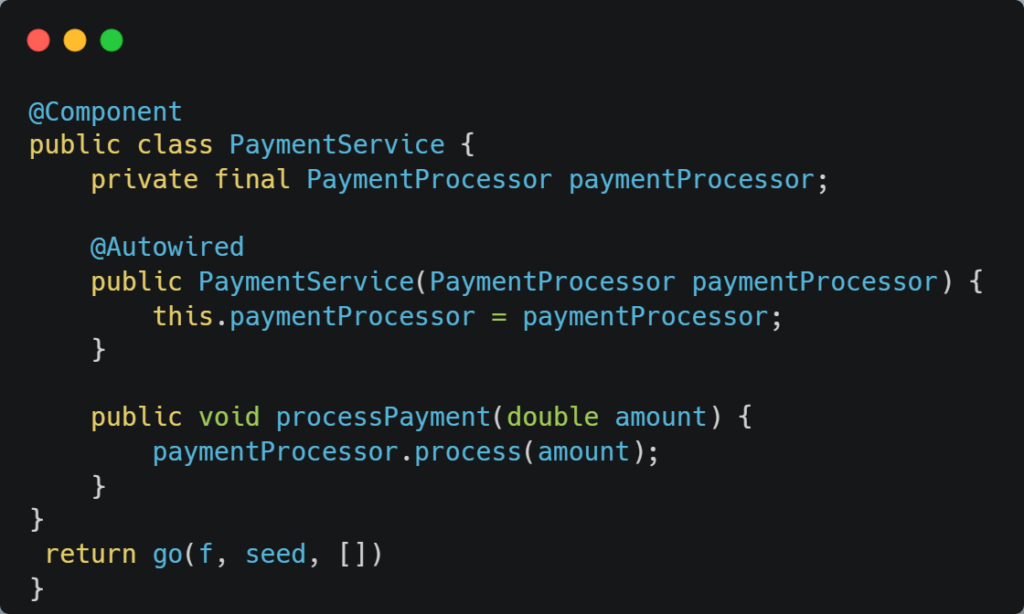Welcome to our Spring Framework series! Today, we dive into Inversion of Control (IoC)—a fundamental concept that powers the flexibility and modularity of the Spring Framework. By understanding IoC, you’ll uncover the secret behind Spring’s ability to simplify dependency management and application scalability.
What is Inversion of Control (IoC)?
Inversion of Control is a design principle where the control of object creation, configuration, and lifecycle is shifted from the program to an external container. In the context of Spring, this “container” is the Spring IoC container.
Key Features of IoC
- Dependency Management: Handles object creation and dependency resolution automatically.
- Configuration Flexibility: Supports XML, annotations, and Java-based configurations.
- Decoupling: Promotes loose coupling between application components.
- Lifecycle Management: Manages object lifecycles, including initialization and destruction.
How IoC Works in the Spring Framework
The IoC container in Spring takes control of object creation and injects dependencies where needed. Let’s break it down:
1. Define Beans
Components are defined as beans in the Spring configuration.
2. Configure Dependencies
Dependencies are specified using XML, annotations, or Java-based configurations.
3. Container Initialization
When the application starts, the IoC container initializes and resolves all dependencies.
Types of IoC Containers in Spring
1. BeanFactory
- A lightweight container that provides basic IoC functionality.
- Suitable for simple applications with minimal configuration.
2. ApplicationContext
- A more advanced container with additional features like event propagation, declarative mechanisms, and integration with AOP.
- Recommended for enterprise-level applications.
Advantages of Using IoC in Spring
- Simplified Development: Automates object creation and dependency management.
- Improved Code Maintainability: Decouples components, making code easier to update and extend.
- Testability: Supports mock dependencies, enhancing unit testing capabilities.
- Reusable Components: Promotes modular and reusable code design.
Practical Example of IoC in Action
Here’s a simple example demonstrating IoC with Spring annotations:
Service Layer Example

Dependency Example

In this example, the IoC container injects PaymentProcessor into PaymentService. This decoupling allows you to swap out PaymentProcessor with another implementation without changing the PaymentService code.
Common Misconceptions about IoC
- IoC is not limited to DI: Although DI is a form of IoC, the concept encompasses more than dependency injection.
- IoC is not specific to Spring: It’s a general principle implemented by various frameworks.
- IoC doesn’t eliminate all boilerplate: While it reduces boilerplate, some configuration is still required.
Conclusion
Inversion of Control is the backbone of the Spring Framework, enabling developers to build modular, scalable, and testable applications. By understanding IoC, you can leverage Spring to its full potential, simplifying the development process.
Next, we’ll explore Spring Bean Lifecycle, delving into how Spring manages beans from initialization to destruction. Stay tuned!
FAQs about Inversion of Control (IoC)
Q1. What is the primary purpose of IoC?
IoC reduces coupling between components and centralizes dependency management.
Q2. How is IoC implemented in Spring?
Spring uses its IoC container to create and inject dependencies into components.
Q3. What’s the difference between BeanFactory and ApplicationContext?
BeanFactory is a basic IoC container, while ApplicationContext offers advanced features like AOP and internationalization.
Q4. Can IoC be used without Spring?
Yes, IoC is a general design principle, not limited to the Spring Framework.




Pingback: Introduction to Spring Framework - TechForbes